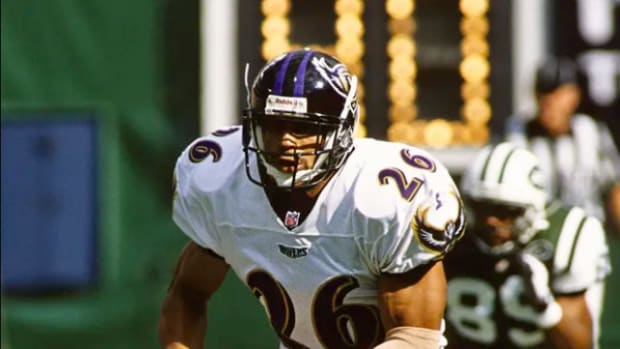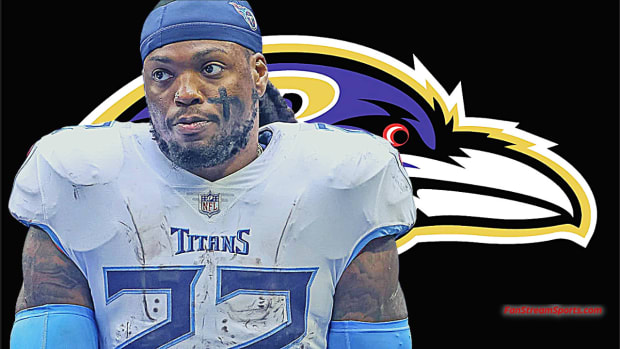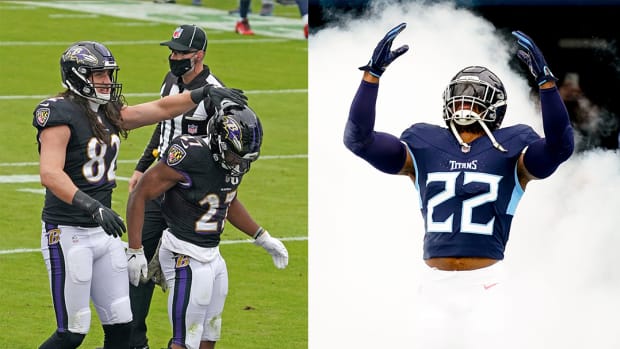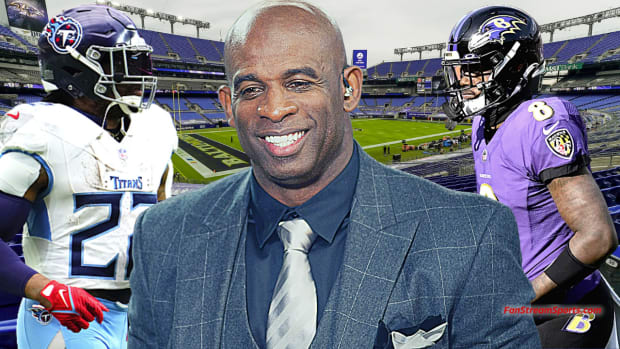Guest Column: Ravens One or Two Draft Picks Away from Excellence
Like so many sports-starved Americans, the NFL Draft offered a welcome reprieve from the current challenges with COVID-19.
The draft is always circled on the calendar as one of my favorite sports events of the year, and the extra time available allowed for deeper analysis. All those college game replays suddenly had meaning as an opportunity to further scout players.
Here are my thoughts on how the Baltimore Ravens performed over the three days:
FIRST ROUND
Truth be told, I wasn’t crazy about the Patrick Queen selection in the first round. Sure, he is extremely athletic and fast for a linebacker. He has the ability to range from sideline-to-sideline, but he is also on the lighter side. I question whether he could hold up as the primary run stopper in the middle.
SECOND ROUND
The selection of J.K. Dobbins was a head-scratcher. Sure, he is talented with proven productivity. He has the ability to be one of, if not the best running back from this draft. The Ravens just don’t need another running back enough to justify the selection with Mark Ingram Gus Edwards and Justice Hill already on the roster. With Boise State offensive tackle Ezra Cleveland and Michigan linebacker Josh Uche available to fill pressing needs, I see this as a missed opportunity. Perhaps there is more to the Ingram injury than the team is letting on.
To my frustration, Uche was still sitting there when the Ravens were up again at pick No. 60 and they traded the pick to the Patriots. Uche was easily the best pass rusher at the Senior Bowl. He is a little undersized but very capable of applying pressure from the edge. Uche is also solid against the run. Bill Belichick is a great judge of defense talent and he thought enough of Uche to trade away a third-rounder to get him.
THIRD ROUND
I have mixed reviews on how the Ravens used their four picks in the third round. I love the selection of Justin Madubuike. He could use some extra bulk against the run but he has the footwork, moves and quickness to provide pressure up the middle. Nonetheless, Madubuike should contribute right away as a situational guy on the D-line with the potential to develop into a solid starter in year two.
Devin Duvernay is the typical Ravens attempt to grab a playmaking wide receiver — boom or bust with history skewed toward the bust. Duvernay is a speedster who projects to fit best in the slot. He is not the answer for the outside possession receiver the Ravens desperately need to move the chains on third down.
Tyre Phillips is a mauler but he is a project at guard or tackle. If he can develop as a tackle, this pick will be a good insurance policy for Ronnie Stanley, who becomes a free agent after the season and is due for a huge payday.
Now, enter my favorite pick of the draft: Malik Harrison. I had hoped the Ravens would target Harrison in the second or third round because pairing him with Queen is genius. It instantly makes both players better as their different skills sets complement each other perfectly.
Queen can cover any tight end or running back one-on-one. He can use his incredible speed to blitz or shoot gaps. Harrison is more of a prototypical middle linebacker. He is fast but also has the size and power to stuff the run, especially behind the Ravens' new and improved defensive line. I imagine defensive coordinator Don "Wink" Martindale was awake all Friday night drawing up schemes to utilize these two talented linebackers. The Ravens could have just gone from having one of the weakest linebacker groups in the league to one of the strongest. Even better, they didn’t have to give up any draft capital to do it. Think about what the Steelers gave up last year to get one linebacker — Devin Bush Jr.
FOURTH ROUND
The Ravens received great value landing Ben Bredeson in the fourth round. Getting him almost makes me forget about passing up Ezra Cleveland in the second round. What he lacks in pure athleticism, he more than makes up for with power and technique. Bredeson is a capable run blocker with excellent productivity at Michigan in pass protection. He should challenge for the starting guard position in camp. Worst case, he becomes a solid backup at guard on either side.
FIFTH ROUND
Broderick Washington seems like a reach in the fifth round. Depth on the defensive line is always coveted by the Ravens but he is a little undersized for that unit. He also doesn’t provide much from a pass rush or pressure standpoint. On the positive side, Washington is a high character guy with proven durability. Holding on to their second fourth-round pick and selecting Jason Strowbridge would have been a better option.
SIXTH ROUND
Picking James Proche from SMU in the sixth round looks promising on the surface based on his college numbers. However, he is another quick but undersized wide receiver prospect that fits best in the slot. What the Ravens really need is an outside playmaker with the size, ball skills and catch radius to win the contested passes. Taking a shot on a physical receiver like Jauan Jennings would have made more sense. Hopefully, Proche develops as a return man where he showed flashes at SMU.
SEVENTH ROUND
The Ravens typically take a flyer in the seventh round and this year was no different. safety Geno Stone from Iowa lacks elite speed but his instincts and intelligence can’t be undervalued in a safety. He could be a reliable backup and strong special teams performer.
CONCLUSION
Overall, it was a good draft that improved the Ravens in a number of ways. However, they were just one edge pass rusher (ie. Uche) and a possession receiver away from being excellent.






